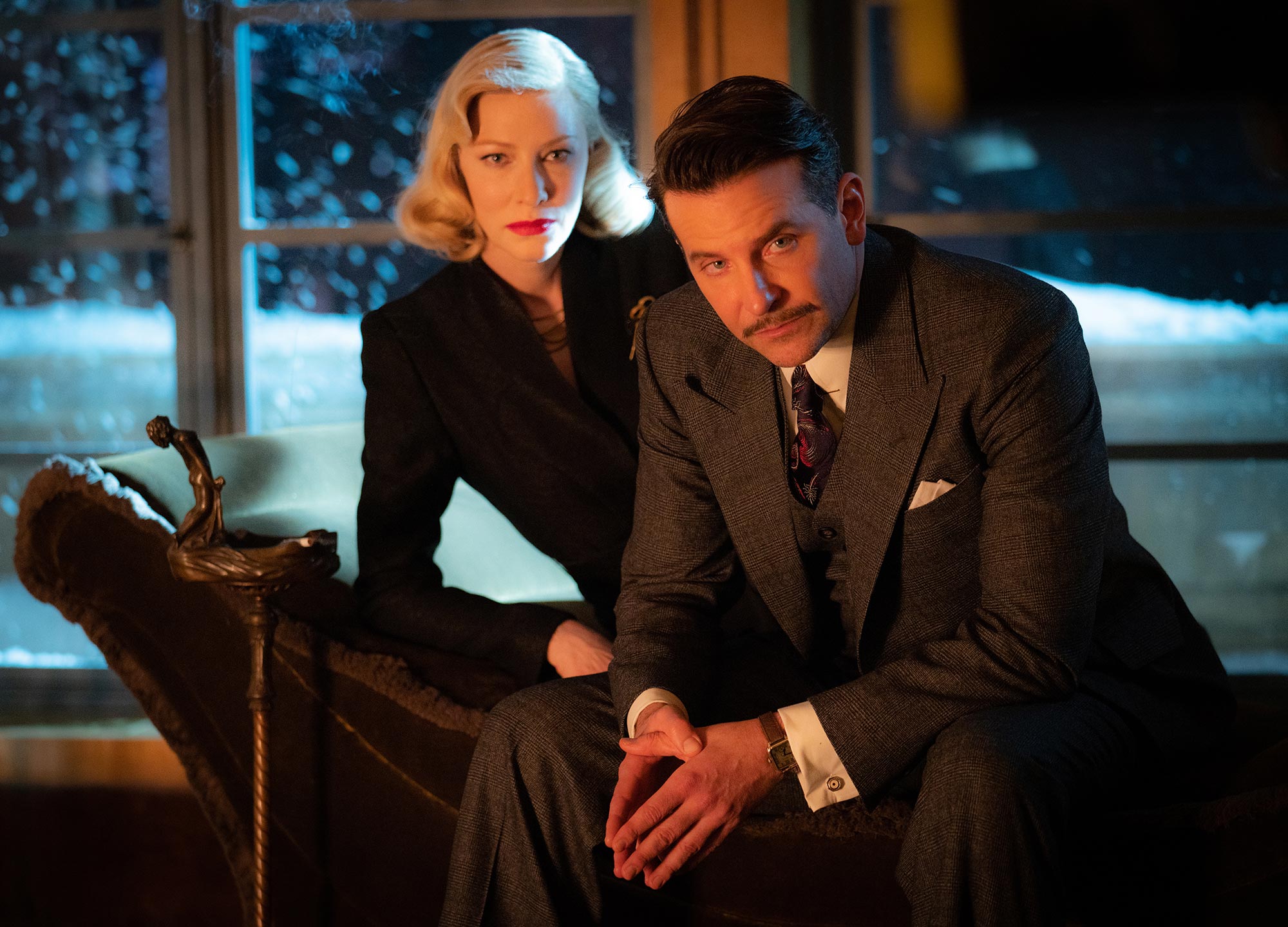Of all the oddball flourishes across Guillermo del Toro’s filmography, it’s perhaps most surreal that he has taken this long to run away and join the circus. In re-adapting William Lindsay Gresham’s 1946 novel of a carnival barker-turned-mentalist, The Shape of Water and Crimson Peak helmer seems a safe bet to follow down the wild, murky corridors of Nightmare Alley. Ever the rapturous stylist, del Toro lends an undeniable dreamlike sheen to this retelling, even managing to sharpen the claws on some of the key scenes shared by its 1947 predecessor. Yet what remains contains no more truth or deep connection than one of Stanton Carlisle’s (Bradley Cooper) spook shows. That role, it seems, is one of Nightmare Alley’s main sticking points.
Seeing Tyrone Power sweat, scheme, and sneer is one of the original film’s key treasures. Having shepherded the project in ’47, Power was actively challenging himself with an against-type role. Though Bradley Cooper slips on duplicity and smarm with ease, he feels a bit lost in the role, as if he’s swimming in a suit one size too big. He has a marquee face for the 21st century, not the ‘40s. In Edmund Goulding’s original, Power roots Stan in an aura of wholesome earnestness that quickly pivots to conniving in a magnetic fashion. For all the right reasons, you can’t take your eyes off him. If Power dazzled by playing against type, Cooper leans into his. With a leading career built on unlikability, instability, or some combination of both, Cooper plays it shifty from frame one, spotting all the angles and slowly amassing big dreams—an enterprising huckster to his bones. It feels absurd that anyone would trust him, aside from the fact that he looks like Bradley Cooper. Save for the actor’s final (and best) moments in the film––which skew closer to the source material than the original’s studio-mandated optimism––del Toro’s arc for Stan reads far flatter, ultimately less interesting than it did for Power.
By no means does a miscast Cooper derail the film. He merely exists within it. Carrying us through del Toro’s finely-tuned noir pastiche to enjoy the big top, ring by ring. We’re treated to a cavalcade of sturdy supporting talents that fill out Nightmare Alley’s darkest and most interesting corners. David Strathairn lends some of the few moments of genuine compassion as a washed-up drunk––a performance that plays like a kicked dog in human form. He masterfully maximizes his screen time before the tale devolves into full-bore moral bankruptcy. Enter Cate Blanchett’s Dr. Lillith Ritter. She delivers the kind of performance so keyed in its excellence the effect feels invisible. Perfectly in command of every beat, she runs circles around Stanton with every glance. Although Blanchett is the standout, one can’t ignore the total pros in Willem Dafoe, Toni Colette, and (an especially great) Richard Jenkins that bolster the proceedings. It’s a savvy move on del Toro’s part. The ensemble elevates what otherwise feels like a mostly successful experiment in style on a studio budget, wrapped in the glorious trappings of Tamara Deverell’s production design, Dan Laustsen’s photography, and Nathan Johnson’s luscious score.
In one sense, Nightmare Alley plays like new territory for del Toro. It’s devoid of any literal monsters with whom he usually finds great comfort. Instead, he relies on the figurative and cerebral, but seems to underestimate (or at least underuse) the emotional. In another, Nightmare Alley plays like much of the director’s previous work; it functions as a funhouse. That is to say, a pleasant and uncertain walk through off-kilter kitsch––delivering a temporary thrill for the price of admission that may or may not wear off the minute you re-enter the real world.
Nightmare Alley is now in theaters.

